WHAT IS TESTICULAR PAIN?
Testicular pain points out pain or discomfort felt in one or both testicles. The pain might be acute or chronic, dull, sharp, or a feeling of soreness or vague discomfort/ache. The main role of the testicle is to produce sperm and the hormone testosterone. Several illnesses and other health conditions could cause testicular pain, and some causes are medical emergencies.
The signs and symptoms might include testicular pain:
- Pain in one or both testicles
- Inflammation
- Redness
- Tenderness of the testicle and/or scrotum
Frequent causes of testicular pain include:
- Epididymitis (because of sexually transmitted diseases or STD)
- Kidney stones
- Testicular tumor, testicular torsion or trauma
- Inguinal hernia
- Orchitis
- Infections like the mumps
- Cancers
- Twisted testicles (testicular torsion)
You also might have nausea, vomiting, and fever. The different causes of testicular pain could be diagnosed with the help of blood tests, urinalysis, and imaging studies, in addition to a complete physical examination. The treatment for testicular pain varies depending on the hidden cause, and/or might include pain medication, antibiotics, and surgical intervention.
The complications of the conditions causing testicular pain might include infection, impairment of fertility, and permanent damage to the testicle, or loss of the testicle. Only some causes of testicular pain can be prevented.
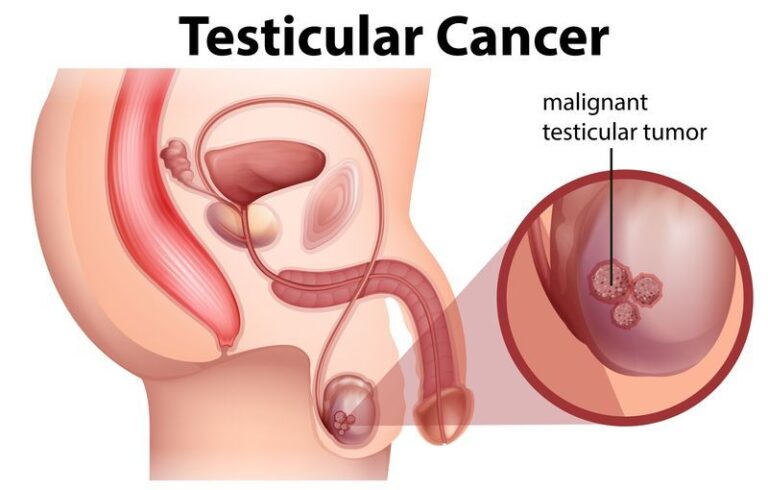
WHAT ARE TESTICLES?
- The testicles form part of the male reproductive organs, with the main function of producing sperm and the male hormone testosterone.
- Testicles are contained within an external sac-like structure known as the scrotum, which is located between the penis and the anus.
- Adult testicles are about the size of two big olives.
- It is normal for one testicle to hang lower than the other within the scrotum.
- Situated near the back of each testicle lies the epididymis, which is a coiled tubular structure that functions to store and transport sperm.
- A tubular structure containing blood vessels, nerves, lymphatic vessels, and the vas deferens known as the spermatic cord courses from the abdomen and is connected to each testicle. In addition to containing important structures for each testicle, the spermatic cord also suspends the testicles within the scrotum.
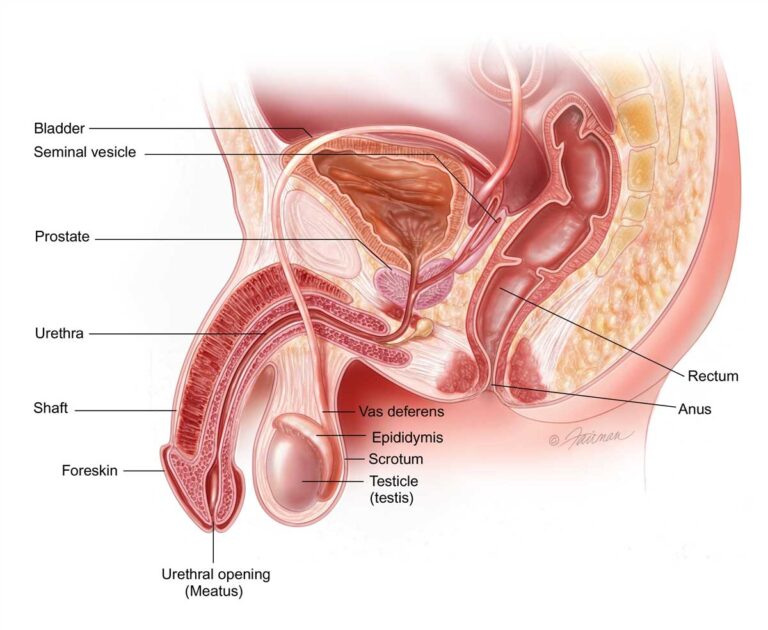
WHAT DOES TESTICULAR PAIN FEEL LIKE? HOW SERIOUS IS THE PAIN?
Testicular pain is pain or physical discomfort that is felt in one or both testicles. The pain might start from the testicle on its own, or it might be the consequence of other conditions affecting the scrotum, groin, or stomach. Though there are numerous medical conditions that could cause testicular pain, it is crucial to understand that a few of them constitute medical emergencies that need immediate medical attention in order to prevent damage or loss of testicular function. Testicular pain could be an acute (short-term) or chronic (long-term) condition. The testicular pain might be constant or intermittent.
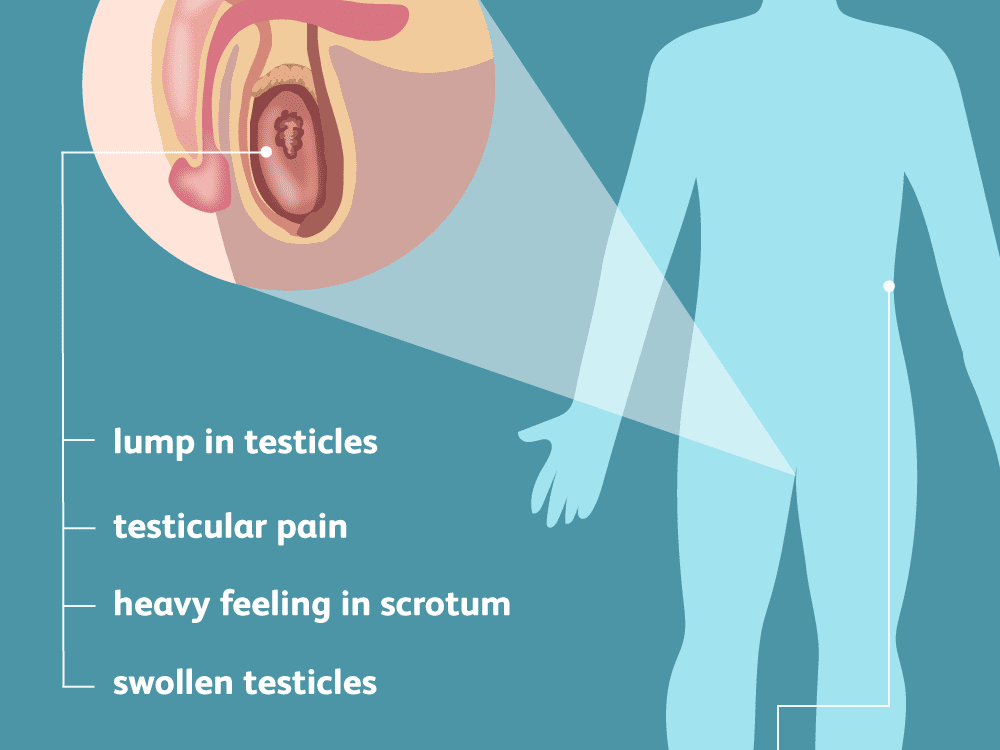
TESTICULAR PAIN SYMPTOMS, CAUSES, AND SIGNS
Testicular torsion generally happens because of an anomaly affecting the normal attachment of the testicle within the scrotum, usually referred to as the “bell clapper” deformity. This abnormality enables the testicle to be freely suspended and twist spontaneously. Many times, this anomaly is present in both testicles. Trauma to the testicle is an uncommon cause of testicular torsion.
Testicular torsion is most frequent in males younger than thirty years of age, with a peak incidence between twelve to eighteen years of age. It could also happen more commonly during the neonatal period. Testicular torsion most usually affects the left testicle, and it is the most frequent cause of testicle loss in adolescent males.
Testicular torsion generally comes on unexpectedly. Serious testicle pain that is only felt in one testicle might also have these signs and symptoms:
- Nausea and vomiting
- Testicular and/or scrotal tenderness
- Testicular and/or scrotal inflammation and redness
- Abdominal pain
- Fever
- Elevation of the damaged testicle within the scrotum
- Horizontal positioning of the damaged testicle within the scrotum
- Loss of the cremasteric reflex on the damaged side (normally, the testicle elevates with light stroking of the upper inner thigh region).
EPIDIDYMITIS SYMPTOMS, CAUSES, AND SIGNS
Epididymitis happens when there is swelling of the epididymis (a structure within the scrotum). Usually, the condition is the result of an infection. Epididymitis mainly affects adult men and is most frequent between the ages of nineteen to forty years although it could happen in prepubescent boys and elderly men.
Sexually transmitted diseases or (STDs) that are most frequently caused by the bacteria Chlamydia trachomatis and Neisseria gonorrhoeae are the most frequent cause of epididymitis in sexually active men. In younger and older males, the infection generally is caused by bacteria like Escherichia coli (E. coli) that are found in the urinary tract. Infection in these age groups is generally the result of an abnormality within the genitourinary system.
Epididymitis comes on slowly. The testicular pain could be mild, moderate, or severe, and only in one testicle. Epididymitis also might have symptoms and signs including:
- Nausea and vomiting
- Testicular and/or scrotal tenderness, generally localized to the region of the epididymis, though it could become more generalized and involve the whole testicle as the disease progresses
- Testicular and/or scrotal inflammation and redness
- Abdominal pain
- Fever
- Urethral discharge
- Urinary symptoms, like burning, urgency, or frequency
INGUINAL HERNIA SYMPTOMS, CAUSES, AND SIGNS
An inguinal hernia is a bulge or protrusion of the intestine through a defect in the abdominal wall musculature of the groin region. This protrusion could sometimes cause inflammation of the scrotum and subsequent testicular pain. Inguinal hernias are common and they could sometimes cause discomfort in the scrotum and/or testicles. Signs and symptoms of an inguinal hernia might include:
- A bulge in the scrotum or in the inguinal region, that might become more pronounced with coughing or straining and Dull ache or burning feeling in the scrotum and/or testicles.
TESTICULAR TUMOR SYMPTOMS, CAUSES, AND SIGNS
Generally, testicular tumors do not cause pain although, occasionally some tumors could cause pain and discomfort of the testicle or scrotum. Signs and symptoms of a tumor in a testicle might include:
- Lump or mass of the testicle
- A change in the size or texture of the testicle
- The dull ache of the lower abdomen, lower back, or groin region
- A sensation of heaviness in the scrotum
ORCHITIS SYMPTOMS, CAUSES, AND SIGNS
Orchitis is a sign of swelling of a testicle, generally because of an infection, for instance, the mumps, the most common cause of the condition. Generally, mumps orchitis happens in males who haven’t reached puberty although, there has been an increase in cases in boys who have gone through puberty and adolescent males, secondary to the decreased use of the mumps vaccine. Rarely, orchitis could be caused by a bacterial infection that, generally, is the result of the progression of epididymitis (epididymo-orchitis).
Because orchitis usually happens as a consequence of an infection (most usually mumps), it is typically also accompanied by other systemic infectious symptoms. Testicular pain might range from mild to severe.
Signs and symptoms of orchitis might include:
- Testicular and/or scrotal tenderness, inflammation, or redness
- Fever and chills
- Headache
- Body aches
- Nausea
- Fatigue
- Parotid gland inflammation (parotitis) in cases of mumps
TRAUMA AND INJURY SYMPTOMS, CAUSES, AND SIGNS
Trauma or injury of any type to the testicles could cause serious pain and discomfort. Blunt testicular trauma (around 85 %) is the most frequent cause of testicle pain. Instances of causes of injuries to the testicle involve sports injuries, a direct kick to the groin or testicle, car accidents, and straddle injuries. Generally, the pain improves with time. Rarely, trauma to the testicles could cause more serious injuries needing immediate medical attention.
The testicular pain might range from severe to absent at the time the person sees a doctor or primary care physician. Rarely, however, the injury might seem minor, there might be a severe hidden injury to the testicle.
Other symptoms and signs of trauma or injury to a testicle involve:
- Testicular and/or scrotal tenderness, inflammation, or bruising
- Bruising of the region between the scrotum and the anus (perineum)
- Nausea and vomiting
TESTICLE RUPTURE SYMPTOMS, CAUSES, AND SIGNS
Testicle rupture is a severe injury that is a result of a disruption to the connective tissue enveloping the testicle (tunica albuginea), which then causes extrusion of testicular tissue. Usually, a sign of testicular rupture is a blood collection (hematocele) that surrounds the testicle.
Other kinds of injuries that cause testicular rupture include penetrating trauma and testicular dislocation. These kinds of testicular injuries generally need surgery.
TORSION OF A TESTICULAR APPENDAGE SYMPTOMS, CAUSES, AND SIGNS
Torsion of a testicular appendage happens because of twisting torsion of the testicular or epididymal appendage, which are functionless structures that are remnants or remains of tissue from human development. The testicular appendage is located between the testicle and the epididymis, while the epididymal appendage is generally projected from the epididymis.
Similar to testicular torsion, twisting of these structures results in decreased blood flow and subsequent testicular pain. This is a frequent condition in younger boys, with most cases happening between seven to fourteen years of age. However this condition is benign and self-limiting, it should be distinguished from the more severe testicular torsion.
Along with torsion of a testicular appendage, the beginning of testicle pain might be unexpected or slow, and the severity or seriousness of pain might range from mild to severe. Generally, a person has no symptoms or signs such as nausea, vomiting, and fever.
The testicle and/or scrotum usually appear normal, without inflammation and redness; however, other symptoms and signs might include:
Testicular tenderness, generally only localized to the top of the right or left testicle.
Sometimes, a small blue dot is visualized near the top of the damaged testicle (blue-dot sign).
The preservation of the general vertical positioning of the damaged testicle within the scrotum and preservation of the cremasteric reflex is usually maintained.
COULD KIDNEY STONES CAUSE TESTICULAR PAIN AND OTHER SYMPTOMS AND SIGNS?
Occasionally, the pain related to kidney stones could radiate into the groin region and cause testicular pain. Although, the testicles appear normal with no inflammation or redness. Other signs and symptoms of kidney stones might include:
- Back (flank) pain and tenderness
- Abdominal pain
- Nausea and vomiting
- Urinary symptoms, like blood in the urine, discomfort with urination, and urinary frequency
HOW ARE TESTICULAR PAIN CAUSES DIAGNOSED?
In order to diagnose the hidden condition causing testicular pain, a health care professional will perform a complete history and physical examination. Laboratory testing and imaging studies might also be ordered depending on the health care professional’s initial impression and evaluation.
Laboratory testing might include:
- Blood work
- Urinalysis
- A swab of the urethra (if the patient has penile discharge suggestive of a sexually transmitted disease or STD)
Imaging studies might be ordered by your health care professional to further delineate the hidden cause of the testicular pain. In specific patients with testicular pain whose symptoms are strongly suggestive of testicular torsion, immediate urologic consultation prior to testing must be obtained in order to prevent potential delays in definitive surgical management.
IMAGING TESTS
Ultrasonography
A color Doppler testicular ultrasound is a non-invasive imaging study that could assess the blood flow to the testicles, as well as the presence of testicular tumors, fluid collections, testicular rupture, and hernias. A kidney ultrasound could be helpful in the assessment of kidney stones.
Radionuclide imaging
This is an imaging study needing the intravenous administration of a radionuclide, useful for the assessment of testicular torsion, as well as other causes of testicular pain. It is used much less frequently than ultrasound.
Computed Tomography (CT) scan or a kidney/ureter/bladder (KUB) X-ray
These particular imaging studies are at times ordered if there is a suspicion that the testicular pain is being caused by kidney stones or other conditions in the abdomen or pelvis.
TESTICULAR PAIN TREATMENT
The treatment for testicular pain varies depending on the hidden cause. As already noted, some conditions causing testicular pain are medical emergencies needing immediate surgical intervention.
Testicular torsion treatment
- Definitive management of testicular torsion needs surgery by an urologist. During surgery, the damaged testicle is untwisted, and if it is viable, the testicle is secured to the scrotal wall (orchiopexy). The unaffected testicle might also be secured to stop testicular torsion from happening, as some males will have the bell clapper abnormality on both sides.
- At times, the damaged testicle could be manually untwisted by a doctor or primary care physician without necessitating emergent surgery, though this is a temporary measure that eventually still needs definitive surgical repair. Likewise, some cases of testicular torsion could happen and then resolve spontaneously, and the health care professional must maintain a high index of suspicion in order for this condition to be diagnosed and ultimately surgically repaired.
- The more quickly the testicle is untwisted and blood flow is restored, the better the chances for salvaging the damaged testicle. If treated within six hours of symptom beginning, the salvage rate nears 100%, while after 24 hours the salvage rate is between 0% and 10%
 EPIDIDYMITIS TREATMENT
EPIDIDYMITIS TREATMENT
The treatment of uncomplicated epididymitis could usually be managed as an outpatient, and consists of the following treatment measures:Generally, acute epididymitis that is properly treated resolves without complications. Although, in some cases of epididymitis, like those related to serious systemic symptoms or in those accompanied by various complications, hospitalization might be necessary. A urologist will be consulted in these more severe cases.
- Antibiotics (which might vary depending on the patient’s age and sexual history), pain medication, and anti-inflammatory agents
- Rest
- Scrotal support and elevation
- Ice packs
Generally, acute epididymitis that is properly treated resolves without complications. Although, in some cases of epididymitis, like those related to serious systemic symptoms or in those accompanied by various complications, hospitalization might be necessary. A urologist will be consulted in these more severe cases.

TORSION OF A TESTICULAR APPENDAGE TREATMENT
The treatment for torsion of the testicular or epididymal appendage is directed toward relief of symptoms, and comprises of the following measures:
- Pain medication and anti-inflammatory agents
- Rest
- Scrotal support and elevation
- Ice packs
Most patients improve with these treatment measures within one week, though symptoms might last longer. In cases of testicular pain refractory to conservative management, surgical excision of the damaged tissue is considered.
KIDNEY STONE TREATMENT
The treatment for kidney stones usually depends on the location of the kidney stone, the size of the kidney stone, and any related complications, like an infection. An uncomplicated kidney stone could generally be treated with the following measures:
- Sufficient fluid intake
- Pain medication
- Anti-nausea medication
- In some examples medications like tamsulosin (Flomax), which might facilitate the passage of kidney stones
Several different measures exist for treating kidney stones that don’t pass spontaneously, like lithotripsy (the use of shock waves to break up the kidney stone) and other more invasive surgical procedures.
Specific patients with intractable pain, intractable vomiting, or those with signs of infection need hospitalization. In those with urinary tract infection and an obstruction in the genitourinary system, antibiotics and emergent urologic intervention are required.
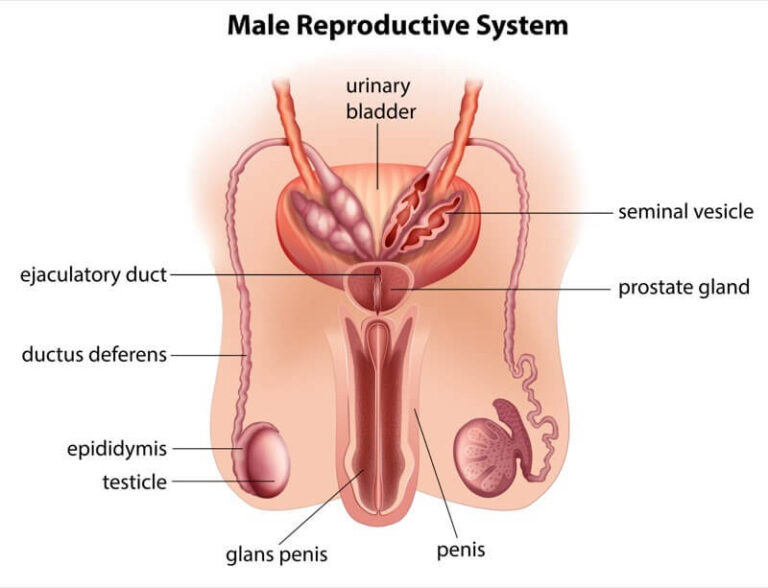
TESTICULAR TUMOR TREATMENT
The treatment for a testicular tumor depends upon various factors. A testicular mass is considered cancer till proven otherwise. If testicular cancer is diagnosed, patients are referred to an oncologist who will discuss the different treatment alternatives available.
TRAUMA TREATMENT
The treatment and management of testicular trauma depend upon the seriousness of the injury. Minor cases of testicular trauma without suspected serious hidden testicular injury could be managed as an outpatient with the following measures:
- Pain medication and anti-inflammatory agents
- Rest
- Scrotal support and elevation
- Ice packs
With testicular rupture, immediate surgical repair is required to preserve testicular function and viability. Other situations needing surgical management include specific blunt trauma injuries with related blood collections (hematoceles), penetrating trauma, and specific cases of testicular dislocation.
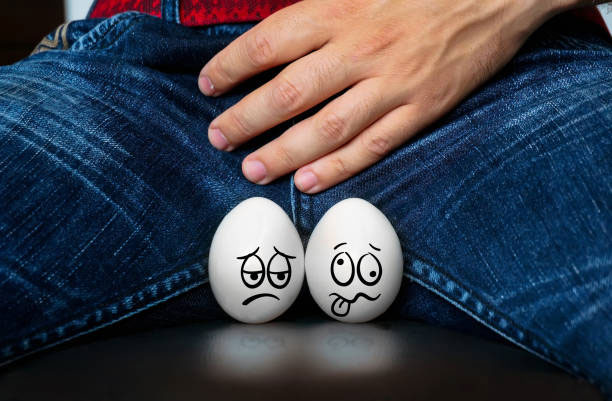 INGUINAL HERNIA TREATMENT
INGUINAL HERNIA TREATMENT
The definitive treatment of inguinal hernias needs surgical repair, sometimes electively as an outpatient, while others need intervention on a more emergent basis. Occasionally, inguinal hernias might not be repaired even electively because a patient is too high-risk to undergo surgery.
Immediate surgical intervention is required in cases of inguinal hernias that are not reducible (unable to be pushed back into the abdomen) and in those cases of strangulation (disruption to the blood supply of the intestine).
ORCHITIS TREATMENT
The treatment of orchitis depends upon the infectious organism responsible for causing the testicular swelling. Both viral and bacterial orchitis could be treated with the following measures:
- Pain medication and anti-inflammatory agents
- Rest
- Scrotal support and elevation
- Ice packs
Bacterial orchitis and epididymo-orchitis need antibiotics. Those cases caused by viruses do not need antibiotics.
TESTICULAR PAIN COMPLICATIONS
The complications related to the different causes of testicular pain are varied. Some individuals might suffer from chronic testicular pain, even after the acute cause of the testicular pain has been treated. Other potential complications might include:
Testicular torsion complications
- Permanent damage to the testicle
- Loss of testicle
- Infertility
- Infection
- Cosmetic deformity
- Epididymitis complications
- Epididymo-orchitis
- An abscess (a collection of pus) formation
- Impaired fertility
- Systemic blood infection (sepsis)
Torsion of a testicular appendage complications
- There are no major complications for torsion of a testicular appendage.
Testicular trauma complications
- Permanent damage to the testicle
- Atrophy (decrease in size) of the testicle
- Loss of testicle
- Infertility
- Abscess formation
- Cosmetic deformity
- Testicular torsion
Inguinal hernia complications
- Incarceration (hernia not able to be pushed back in)
- Strangulation (disturbance to the blood supply of the intestine protruding through the abdominal wall defect)
Orchitis complications
- Atrophy of the testicle
- Impaired fertility
- Abscess formation
Kidney stone complications
- Permanent kidney damage
- Urosepsis (systemic blood infection arising from contaminated urine)
Testicular tumor complications
- The complications of a testicular tumor vary depending upon the hidden type of tumor and the extent of the disease.
TESTICULAR PAIN PREVENTION
There are a few measures that you could take to prevent specific causes of testicular pain. Although, many of the causes are not entirely preventable.
- For epididymitis or bacterial orchitis caused by sexually transmitted diseases (STDs), condom use could lower the risk of transmission of sexually transmitted diseases (STDs).
- The use of appropriate protective gear during sporting activities could help prevent testicular trauma.
- Mumps immunization could decrease the incidence of viral orchitis.
If you or anyone you know is suffering from testicular pain, our expert providers at Specialty Care Clinics will take care of your health and help you recover.
Call (469) 545-9983 to book an appointment for an at-home check-up.
